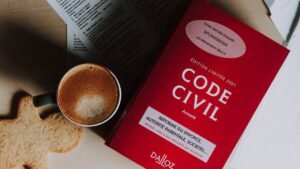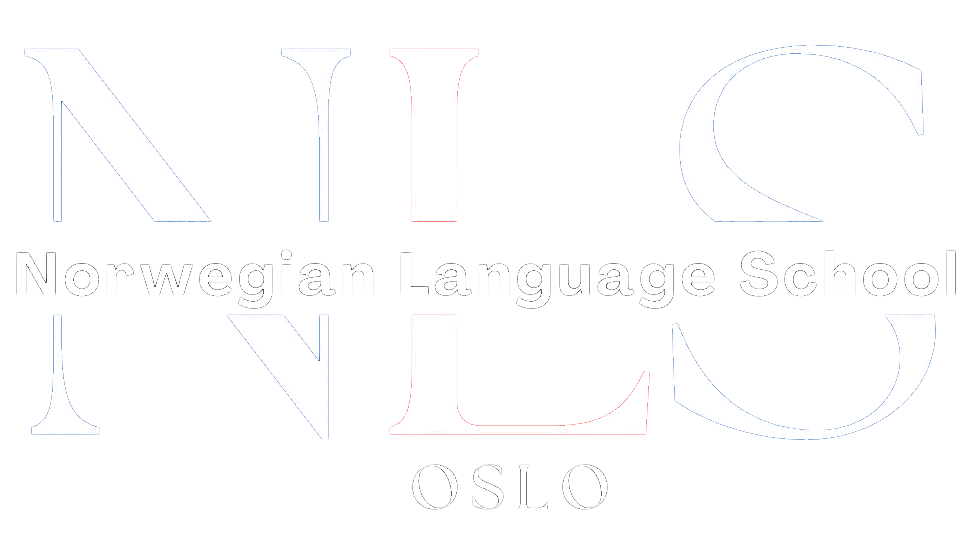

Top Must-Know Norwegian Vocabulary Words for Maternity and Parenthood
Learning Norwegian vocabulary words related to maternity and parenthood is crucial for individuals living in Norway who are expecting a child or already have children. Being able to effectively communicate with healthcare providers, childcare professionals, and other parents is essential for ensuring the well-being of both the parent and child. By learning these vocabulary words, individuals can navigate the healthcare system, understand important information about pregnancy and childbirth, and engage in meaningful conversations with other parents. Additionally, having a strong command of the language can help individuals feel more confident and empowered in their parenting journey.
Table of Contents
ToggleNorwegian Classes: Finding the Right Fit for You
When it comes to learning Norwegian, there are various options available to suit different learning styles and schedules. Online courses, in-person classes, and private tutoring are all viable options for individuals looking to learn the language. Online courses offer flexibility and convenience, allowing learners to study at their own pace from the comfort of their own homes. In-person classes provide a more structured learning environment with the opportunity for face-to-face interaction with instructors and fellow students. Private tutoring offers personalized instruction tailored to the individual’s specific needs and goals.
To find the right class for your learning style and schedule, it’s important to consider factors such as your preferred method of learning, your availability, and your budget. Research different language schools or online platforms that offer Norwegian courses and read reviews from previous students. Consider reaching out to current or former students to get their feedback on the quality of instruction and the overall learning experience. It may also be helpful to attend trial classes or take advantage of free resources offered by language schools to get a feel for their teaching style and approach.
Norwegian Course Options: From Beginner to Advanced
Norwegian courses are typically divided into different levels, ranging from beginner to advanced. Beginner courses are designed for individuals who have little to no prior knowledge of the language. These courses focus on building a foundation in basic vocabulary, grammar, and pronunciation. As learners progress to intermediate and advanced levels, the focus shifts to more complex grammar structures, idiomatic expressions, and advanced vocabulary.
In beginner courses, learners can expect to learn essential vocabulary words and phrases related to everyday life, including greetings, introductions, and basic conversational skills. They will also learn how to read and write in Norwegian, as well as develop listening and speaking skills through interactive exercises and role-playing activities. Intermediate and advanced courses delve deeper into Norwegian grammar and syntax, allowing learners to express themselves more fluently and accurately in both spoken and written form.
Learn Norwegian: Tips and Tricks for Faster Language Acquisition
Learning a new language can be a challenging task, but there are several tips and tricks that can help expedite the language acquisition process. One effective method is to use flashcards to memorize vocabulary words. Flashcards allow learners to practice recalling words and their meanings, helping to reinforce memory retention. Another helpful tip is to practice speaking with native speakers. This can be done through language exchange programs or by joining conversation groups where learners can engage in conversations with native Norwegian speakers.
Immersing oneself in the language is another effective way to learn Norwegian more quickly. This can be done by watching Norwegian movies or TV shows with subtitles, listening to Norwegian music or podcasts, or reading books or articles in Norwegian. By exposing oneself to the language on a regular basis, learners can improve their listening comprehension skills and become more familiar with the nuances of the language.
Norwegian Language School: What to Expect and How to Choose
When choosing a Norwegian language school, it’s important to consider factors such as class size, teaching methods, and course materials. Smaller class sizes often allow for more personalized attention from instructors, giving learners the opportunity to ask questions and receive feedback on their progress. Additionally, smaller class sizes often foster a more supportive and collaborative learning environment.
Teaching methods can vary from school to school, so it’s important to find a method that aligns with your learning style. Some schools may focus more on grammar and written exercises, while others may prioritize conversational skills and interactive activities. It’s also important to consider the course materials provided by the language school. Look for schools that offer comprehensive textbooks, workbooks, and supplementary materials that cover a wide range of topics and vocabulary.
When choosing a language school, it can be helpful to attend trial classes or take advantage of free resources offered by the school. This will give you a firsthand experience of the teaching style and approach, allowing you to determine if it is a good fit for your learning needs and preferences. Additionally, reach out to current or former students to get their feedback on the quality of instruction and the overall learning experience.
Vocabulary Words for Pregnancy and Childbirth: Basic Terminology

Learning Norwegian vocabulary words related to pregnancy and childbirth is essential for individuals who are expecting a child or planning to have children in Norway. Here are some basic vocabulary words to get you started:
1. Gravid – Pregnant
Pronunciation: GRAH-veed
Example sentence: Jeg er gravid og venter mitt første barn. (I am pregnant and expecting my first child.)
2. Fødsel – Birth
Pronunciation: FURD-sel
Example sentence: Når er terminen for fødselen din? (When is your due date?)
3. Ultralyd – Ultrasound
Pronunciation: OOL-trah-lewd
Example sentence: Jeg skal ha en ultralyd i morgen for å se hvordan babyen min vokser. (I am having an ultrasound tomorrow to see how my baby is growing.)
4. Jordmor – Midwife
Pronunciation: YORD-mor
Example sentence: Jeg har en avtale med jordmoren min i morgen for å diskutere fødselsplanen min. (I have an appointment with my midwife tomorrow to discuss my birth plan.)
5. Barsel – Maternity leave
Pronunciation: BAR-sel
Example sentence: Jeg skal ta barselpermisjon i ett år etter fødselen. (I am going to take one year of maternity leave after the birth.)
Vocabulary Words for Infant Care: Feeding, Diapering, and Bathing
Learning Norwegian vocabulary words related to infant care is important for parents who want to effectively communicate with healthcare providers and childcare professionals. Here are some vocabulary words related to feeding, diapering, and bathing:
1. Amming – Breastfeeding
Pronunciation: AH-ming
Example sentence: Jeg ammer babyen min hver tredje time. (I breastfeed my baby every three hours.)
2. Flaske – Bottle
Pronunciation: FLAH-skeh
Example sentence: Babyen min tar ikke flaske, så jeg ammer ham hele tiden. (My baby doesn’t take a bottle, so I breastfeed him all the time.)
3. Bleie – Diaper
Pronunciation: BLEE-eh
Example sentence: Jeg må skifte bleie på babyen min. (I need to change my baby’s diaper.)
4. Bleieskift – Diaper change
Pronunciation: BLEE-eh-skift
Example sentence: Kan du hjelpe meg med et bleieskift? (Can you help me with a diaper change?)
5. Badekar – Bathtub
Pronunciation: BAH-deh-kar
Example sentence: Jeg skal bade babyen min i badekaret i kveld. (I am going to bathe my baby in the bathtub tonight.)
Vocabulary Words for Toddlerhood: Milestones, Playtime, and Discipline
As children grow into toddlerhood, learning Norwegian vocabulary words related to milestones, playtime, and discipline becomes important for parents. Here are some vocabulary words to help you communicate effectively:
1. Morsomt – Fun
Pronunciation: MOR-somt
Example sentence: Vi hadde det veldig morsomt på lekeplassen i dag. (We had a lot of fun at the playground today.)
2. Leketøy – Toys
Pronunciation: LEH-keh-toy
Example sentence: Kan du plukke opp leketøyene dine og legge dem på plass? (Can you pick up your toys and put them away?)
3. Lære – Learn
Pronunciation: LEH-reh
Example sentence: Vi lærer nye ord hver dag. (We learn new words every day.)
4. Oppdragelse – Discipline
Pronunciation: OPP-dra-gel-seh
Example sentence: Det er viktig å ha en konsekvent oppdragelse for å lære barna grenser. (It is important to have consistent discipline to teach children boundaries.)
5. Sove – Sleep
Pronunciation: SO-veh
Example sentence: Barnet mitt sover godt om natten. (My child sleeps well at night.)
Vocabulary Words for Parenting: Communication, Support, and Self-Care
Learning Norwegian vocabulary words related to parenting is important for effective communication with other parents and professionals in the field. Here are some vocabulary words to help you navigate the world of parenting:
1. Kommunikasjon – Communication
Pronunciation: KO-moo-nee-KA-sjon
Example sentence: God kommunikasjon er nøkkelen til et sunt forhold med barnet ditt. (Good communication is the key to a healthy relationship with your child.)
2. Støtte – Support
Pronunciation: STUR-teh
Example sentence: Det er viktig å ha støtte fra familie og venner når du er forelder. (It is important to have support from family and friends when you are a parent.)
3. Selvpleie – Self-care
Pronunciation: SELV-pleh-eh
Example sentence: Husk å ta vare på deg selv og prioritere selvpleie som en forelder. (Remember to take care of yourself and prioritize self-care as a parent.)
4. Tålmodighet – Patience
Pronunciation: TOL-mo-dee-het
Example sentence: Å være forelder krever mye tålmodighet. (Being a parent requires a lot of patience.)
5. Kjærlighet – Love
Pronunciation: SHAYR-lee-het
Example sentence: Kjærligheten jeg føler for barnet mitt er ubetinget. (The love I feel for my child is unconditional.)
Putting Your Norwegian Vocabulary to Use in Everyday Life
Learning Norwegian vocabulary words related to maternity and parenthood is essential for effective communication and engagement in everyday life. By being able to communicate with healthcare providers, childcare professionals, and other parents, individuals can ensure the well-being of themselves and their children. It is important to practice using these vocabulary words in everyday life, such as during doctor’s appointments or playdates with other parents, to reinforce learning and improve fluency. By putting your Norwegian vocabulary to use, you can navigate the world of maternity and parenthood with confidence and ease.
If you’re interested in expanding your Norwegian vocabulary beyond maternity and parenthood, you might find this article on “Discontinuous Conjunctions in Norwegian” helpful. It explores the intermediate level topic of adskillende konjunksjoner and provides valuable insights for learners at the B2 level. Check it out here.
FAQs
What is the article about?
The article is about the top Norwegian vocabulary words that are essential for maternity and parenthood.
Why is it important to know these Norwegian vocabulary words?
Knowing these Norwegian vocabulary words is important for individuals who are planning to have a baby or are already parents in Norway. It helps them communicate effectively with healthcare providers, understand medical terms, and navigate the healthcare system.
What are some examples of the Norwegian vocabulary words included in the article?
Some examples of the Norwegian vocabulary words included in the article are “gravid” (pregnant), “fødsel” (birth), “amming” (breastfeeding), “bleieskift” (diaper change), and “barnevogn” (stroller).
Who can benefit from reading this article?
This article can benefit anyone who is planning to have a baby or is already a parent in Norway. It can also be useful for healthcare providers who work with pregnant women and new parents.
Are the Norwegian vocabulary words listed in the article in alphabetical order?
No, the Norwegian vocabulary words are not listed in alphabetical order. They are grouped into categories such as pregnancy, childbirth, baby care, and parenting.
Is the article only available in Norwegian?
No, the article is available in English. It provides the Norwegian vocabulary words along with their English translations and explanations.

Norwegian A1-A2
Course Overview The Norwegian A1-A2 course is an online program focused on teaching essential Norwegian grammar and vocabulary. It includes a variety of materials and topics, with opportunities to interact with a Norwegian teacher entirely online. Curriculum Highlights The course covers key areas such as grammar and vocabulary and topics such as family, daily life, education, work, traditions, and leisure activities. Who Should Enroll? This course is perfect for beginners or those at the A1 or A2 levels who want to improve their Norwegian skills. What You Get Access to the full Norwegian A1-A2 course. A monthly 1-hour online conversation with a teacher. Many written and oral assignments. Comprehensive information on Norwegian grammar, Norwegian vocabulary and how to use them, important sentence structures, etc. Tips on additional resources to further enhance your Norwegian learning.
0 students enrolled
Last updated Dec 10th, 2024
If you want to learn Norwegian, you can register for classes here. We look forward to hearing from you and helping you become fluent in Norwegian.






